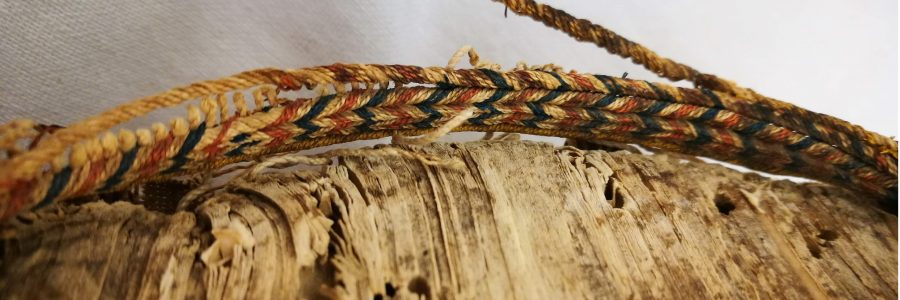
The Polonsky Foundation Greek Manuscripts Project: Medieval Eastern Mediterranean Binding Model – Part 1.
Welcome to another Polonsky Foundation Greek Manuscripts Conservation blogpost. Since our last update on conserving fragments we have made great progress with the treatment of the University Library’s Greek collections – an update on which is just around the corner. In this blogpost we will share the first part of the process of creating a Medieval Eastern Mediterranean binding model, which is an element of the conservation team’s continued professional development. The second and final part will come in a future blogpost.
Medieval Eastern Mediterranean bookbinding differs from Western European bookbinding in many ways. The differences start from the type of sewing, through to the way the endbands are sewn and to how the binding is covered and decorated. As the project involves the conservation treatment of Medieval Eastern Mediterranean bindings it is imperative that we understand how they work, their structure and production; the best way to understand this is to do it ourselves!

The first step of the process is to prepare the wooden boards. In this instance we used British Columbian pine – pine was commonly used in historic bindings along with poplar. In Medieval Eastern Mediterranean bookbinding the attachment of the boards is made either as part of the sewing process or a bridling process at attachment stations. The thread is first anchored through drilled holes and channels cut specifically to anchor the sewing. Holes were also drilled in the boards in preparation for endband sewing. The outer spine edges were rounded so they would eventually meet with the spines of the gatherings to form a shallow round. Lastly, the remaining edges were grooved.

After the preparation of the boards the sewing can commence. Typically in Medieval Eastern Mediterranean bindings the gatherings are sewn together using a loop-stitch (sometimes referred to as link- or chain-stitch) in two halves – meaning the sewing starts from each board and eventually meets in the middle. We used these techniques in our binding models, as can be seen in the photos below.

The spine was then lined with two layers of coarse cloth, one extending a third of the width of each board and the other the whole width of each board. At this point the bookblock edges can be trimmed. It is a characteristic of Medieval Eastern Mediterranean bindings to have the bookblock flush with the boards, this is achieved by trimming the bookblock after sewing and using the boards as a guide. We used a paring knife, which has one flat side, to trim the edges by drawing it across the pages as it would have been traditionally done – in a similar action to a book-plough.

Next is sewing the endbands. There is a huge variety of Greek-style endbands. For this model we have decided to practise two styles (a historic binding would have the same style at both ends). The first is the ‘Greek on two cores’ endband and the second is the ‘compact-chevron and crowning-core’ endband. The first is a simple endband with plain thread, whereas the second is a more complex compound endband with primary and coloured secondary sewing.

Unfortunately that is it for part one. In part two we shall share how we covered the bindings, made metal furniture and leather braids. Between now and then the conservation team will be continuing treatment of the University Library’s Greek manuscripts and will start the treatment of more of the manuscripts held at Cambridge Colleges. There will also be a blogpost on three manuscripts from the University Library collections that have been identified for more in-depth treatment.
